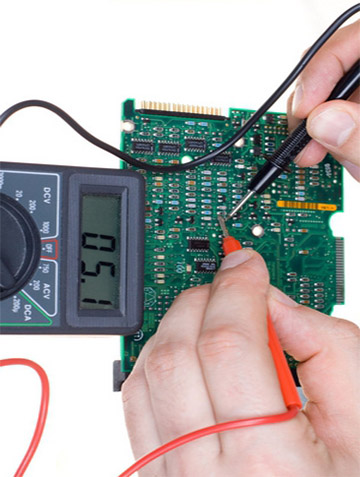Printed circuit boards (PCBs) are an integral part of the electronic industry, and their demand has been increasing at a rapid pace due to the growth of various industries such as automotive, aerospace, telecommunications, and medical devices. The PCB assembly process involves mounting electronic components onto the PCBs, and this process has undergone significant changes over the years with the advancements in technology.
PCB Assembly Process
The PCB assembly process involves several steps, including surface mount technology (SMT) assembly, through-hole assembly, and final assembly. The SMT assembly is the most widely used method in the electronic industry, and it involves placing surface mount components onto the PCBs using automated machines. Through-hole assembly involves manually inserting the components through the holes in the PCB, and this method is mainly used for components that require high mechanical strength and power.
After the components are mounted onto the PCB, the final assembly involves soldering the components onto the board and testing the board for functionality and reliability. The final assembly is a crucial step in the process, as it ensures that the PCBs meet the required specifications and quality standards.

PCB Assembly Industry Overview
The PCB assembly industry is a multi-billion-dollar industry, and it is expected to continue growing in the coming years. According to a report by MarketsandMarkets, the global PCB market size is projected to grow from $61.5 billion in 2020 to $81.5 billion by 2025, at a compound annual growth rate (CAGR) of 5.7%. The growth of the PCB market can be attributed to the increasing demand for consumer electronics, the rise in the number of connected devices, and the growing adoption of electric vehicles.
Table 1: Global PCB Market Size, 2020-2025 (USD Billion)
|
Year
|
PCB Market Size
|
|
2020
|
61.5
|
|
2021
|
65.3
|
|
2022
|
69.3
|
|
2023
|
73.5
|
|
2024
|
77.7
|
|
2025
|
81.5
|
(Source: MarketsandMarkets)
The Asia Pacific region is the largest market for PCBs, and it is expected to continue dominating the market in the coming years. China is the largest producer of PCBs, and it accounts for a significant share of the global PCB market. Other key players in the PCB assembly industry include Japan, South Korea, Taiwan, and the United States.
Table 2: Global PCB Market Share by Region, 2020-2025 (%)
|
Region
|
2020
|
2021
|
2022
|
2023
|
2024
|
2025
|
|
Asia Pacific
|
74.0
|
74.5
|
75.0
|
75.5
|
76.0
|
76.5
|
|
Europe
|
12.0
|
11.5
|
11.0
|
10.5
|
10.0
|
9.5
|
|
North America
|
9.0
|
9.5
|
10.0
|
10.5
|
11.0
|
11.5
|
|
Rest of World
|
5.0
|
4.5
|
4.0
|
3.5
|
3.0
|
2.5
|
(Source: MarketsandMarkets)
The PCB assembly industry is expected to face several challenges in the coming years, including the increasing demand for smaller and more complex PCBs, the shortage of skilled labor, and the rising costs of raw materials. However, the industry is also expected to benefit from the advancements in technology, such as the adoption of artificial intelligence (AI) and the Internet of Things (IoT) in the PCB assembly process.
Conclusion
In conclusion, the PCB assembly industry is a crucial component of the electronic industry, and its demand is expected to continue growing in the coming years. The SMT assembly process is the most widely used method in the industry, and the final assembly step is critical in ensuring the functionality and reliability of the PCBs. The Asia Pacific region is the largest market for PCBs, with China being the largest producer. While the industry may face several challenges, advancements in technology such as AI and IoT are expected to provide opportunities for growth and innovation in the industry.
Table 3: Key Takeaways
|
Key Takeaways
|
|
The PCB assembly process involves SMT assembly, through-hole assembly, and final assembly.
|
|
The global PCB market size is projected to grow from $61.5 billion in 2020 to $81.5 billion by 2025.
|
|
The Asia Pacific region is the largest market for PCBs, with China being the largest producer.
|
|
The industry may face challenges such as the shortage of skilled labor and rising costs of raw materials.
|
|
Advancements in technology such as AI and IoT are expected to provide opportunities for growth and innovation.
|
As the demand for electronic devices continues to grow, the PCB assembly industry is poised to play an increasingly important role in the manufacturing process. From smartphones and laptops to cars and medical devices, the quality and reliability of PCBs are critical to the functionality of these products.
In addition to the challenges mentioned earlier, such as the shortage of skilled labor and rising costs of raw materials, the industry also faces increasing pressure to adopt sustainable practices. With the rising awareness of environmental concerns, consumers are becoming more conscious of the impact their purchases have on the environment. Therefore, companies that prioritize sustainable practices in their PCB assembly process are likely to have a competitive advantage in the market.
In conclusion, the PCB assembly industry is an essential component of the electronic industry, and its demand is expected to continue growing in the coming years. With the adoption of new technologies and sustainable practices, the industry can meet the challenges ahead and continue to innovate and grow.
Any question, please contact us. Here.

 Englishen
Englishen










